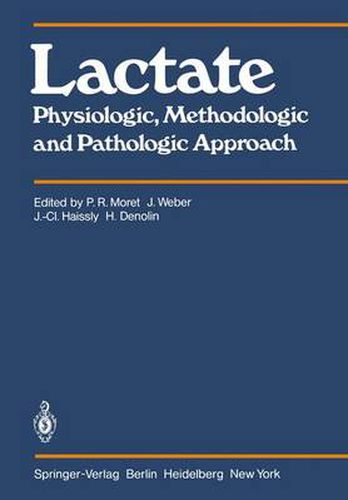Readings Newsletter
Become a Readings Member to make your shopping experience even easier.
Sign in or sign up for free!
You’re not far away from qualifying for FREE standard shipping within Australia
You’ve qualified for FREE standard shipping within Australia
The cart is loading…






This title is printed to order. This book may have been self-published. If so, we cannot guarantee the quality of the content. In the main most books will have gone through the editing process however some may not. We therefore suggest that you be aware of this before ordering this book. If in doubt check either the author or publisher’s details as we are unable to accept any returns unless they are faulty. Please contact us if you have any questions.
This book covers the principal reports and discussions which have been presented during the Symposium on Anaerobic Metabolism and Lactic Acid which was held in Anzere (Wallis, Switzerland) from 19th till 20th January 1978 under the patronage of the European Society of Cardiology. ~s Dr. Wilkie and Hermansen mentioned in their paper, Berzelius was the first one who recognized in 1807 the existence of free lactic acid in the muscular fluid and thought that the amount of free lactic acid in a muscle is proportional to the extent to which it has been previously exercised . Since, many controversies have appeared, not as far as for its presence in the muscle, but as for its relations to oxygen debt or fatigue, to its physiological part, to its metabolism (oxydation or conversion to glycogen in situ), or to its pathological significance in clinical conditions. In this symposium, physiologists and biochemists tried to resolve some of the basic problems, they defined terminology and introduced new facts. Methods to determine the lactic acid or lactate have been reviewed. Lactic acid or lactate in various clinical conditions were the objectives of many collected reports in the last part of the symposium. Clinicians, who are interested in Pneumology, Diabetology, Hepatology, Angiology, Intensive Medicine or Sport Medicine, and particularly cardiologists will find precious information. The organizing committee thanks every reporter, specially the Chairmen, and everyone who took an active part in the preparation or realization of this symposium.
$9.00 standard shipping within Australia
FREE standard shipping within Australia for orders over $100.00
Express & International shipping calculated at checkout
This title is printed to order. This book may have been self-published. If so, we cannot guarantee the quality of the content. In the main most books will have gone through the editing process however some may not. We therefore suggest that you be aware of this before ordering this book. If in doubt check either the author or publisher’s details as we are unable to accept any returns unless they are faulty. Please contact us if you have any questions.
This book covers the principal reports and discussions which have been presented during the Symposium on Anaerobic Metabolism and Lactic Acid which was held in Anzere (Wallis, Switzerland) from 19th till 20th January 1978 under the patronage of the European Society of Cardiology. ~s Dr. Wilkie and Hermansen mentioned in their paper, Berzelius was the first one who recognized in 1807 the existence of free lactic acid in the muscular fluid and thought that the amount of free lactic acid in a muscle is proportional to the extent to which it has been previously exercised . Since, many controversies have appeared, not as far as for its presence in the muscle, but as for its relations to oxygen debt or fatigue, to its physiological part, to its metabolism (oxydation or conversion to glycogen in situ), or to its pathological significance in clinical conditions. In this symposium, physiologists and biochemists tried to resolve some of the basic problems, they defined terminology and introduced new facts. Methods to determine the lactic acid or lactate have been reviewed. Lactic acid or lactate in various clinical conditions were the objectives of many collected reports in the last part of the symposium. Clinicians, who are interested in Pneumology, Diabetology, Hepatology, Angiology, Intensive Medicine or Sport Medicine, and particularly cardiologists will find precious information. The organizing committee thanks every reporter, specially the Chairmen, and everyone who took an active part in the preparation or realization of this symposium.